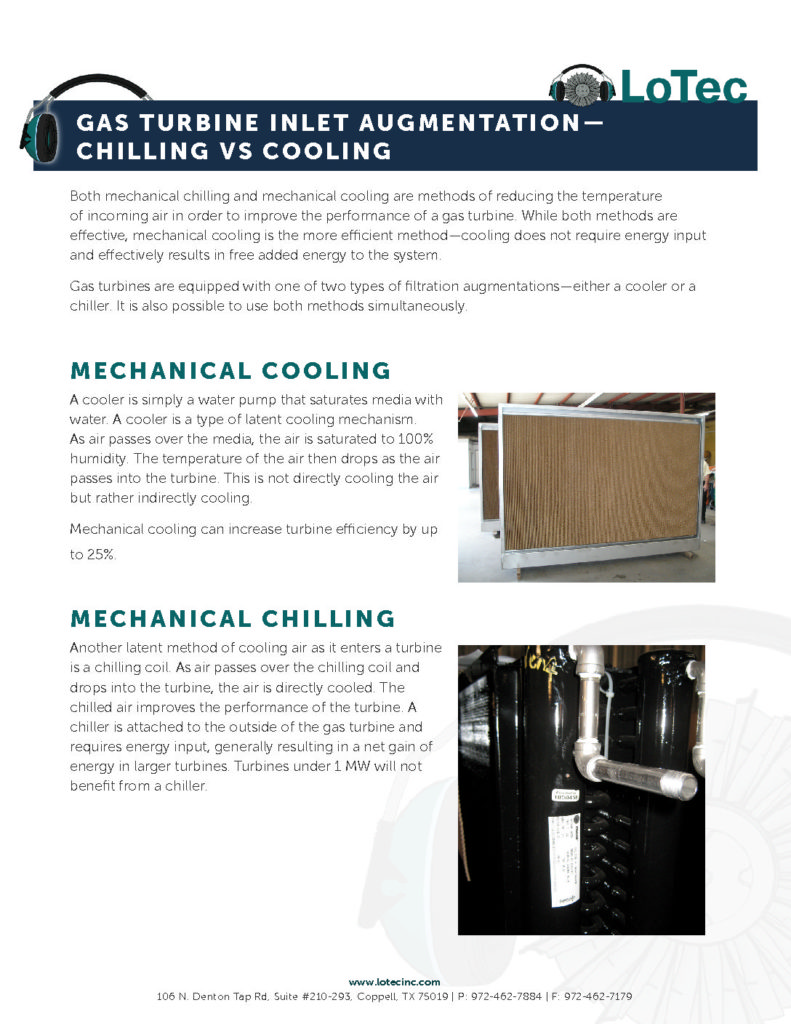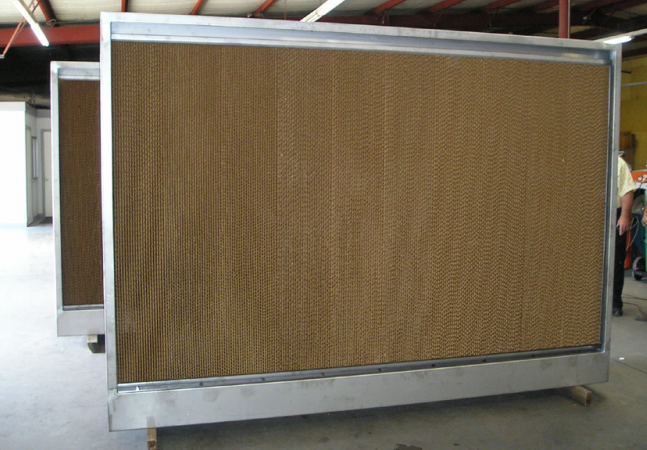Both mechanical chilling and mechanical cooling are methods of reducing the temperature of incoming air in order to improve the performance of a gas turbine. While both methods are effective, mechanical cooling is the more efficient method—cooling does not require energy input and effectively results in free added energy to the system.
Gas turbines are equipped with one of two types of filtration augmentations—either a cooler or a chiller. It is also possible to use both methods simultaneously.
MECHANICAL COOLING
A cooler is simply a water pump that saturates media with water. A cooler is a type of latent cooling mechanism. As air passes over the media, the air is saturated to 100% humidity. The temperature of the air then drops as the air passes into the turbine. This is not directly cooling the air but rather indirectly cooling.
Mechanical cooling can increase turbine efficiency by up to 25%
MECHANICAL CHILLING
Another latent method of cooling air as it enters a turbine is a chilling coil. As air passes over the chilling coil and drops into the turbine, the air is directly cooled. The
chilled air improves the performance of the turbine. A chiller is attached to the outside of the gas turbine and requires energy input, generally resulting in a net gain of energy in larger turbines. Turbines under 1 MW will not benefit from a chiller.


